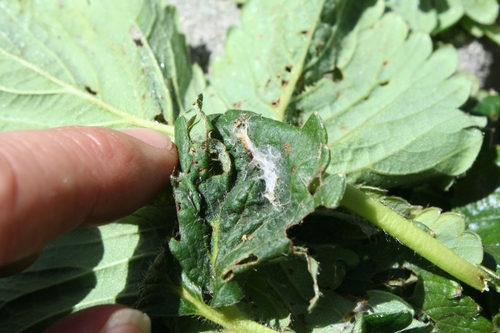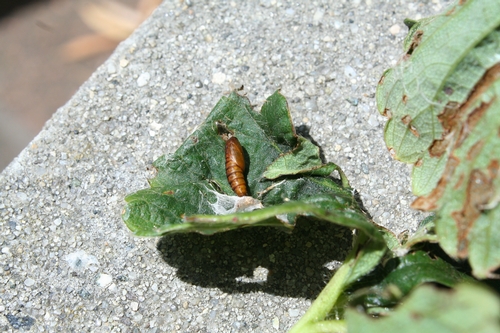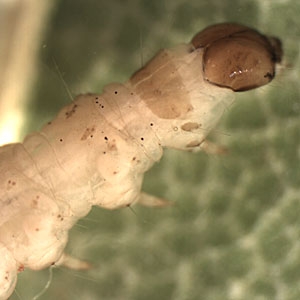This is a revision from the previous post:
A couple of samples handled by this office from strawberry over the past two weeks have turned out to be a leafroller species which might not be light brown apple moth. Probably the reason people have been asking about these is the general concern about having leafrollers in one’s production field at all. This is understandable, considering the current regulatory environment which mandates closure of at least part of a field on discovery of one species of leafroller; the light brown apple moth. Fields can also be temporarily shut down as regulators work on distinguishing leafrollers from one another in order to get a positive light brown apple moth identification.
The following short description will be about garden tortrix in strawberry.
This very important for those making a definitive identification in the field. While the UC IPM guidelines refer to garden tortrix as having a "spot on the back of the head" this spot is actually a darkened prothoracic shield behind the head on not on it (see fourth picture below). I would very much like to get a definitive sample from our area of garden tortrix for a clear picture for this blog, so will ask my readership to bring any suspect samples. It would be very helpful.
Attached Images:

Leafroller webbing on strawberry leaf

Leafroller webbing on strawberry leaf

Leafroller webbing and accompanying pupa on strawberry leaf

This is a garden tortrix larva. Note darkened prothoracic shield BEHIND the head. From: LBAM ID- Tools for diagnosising light brown apple moth and related leafrollers.